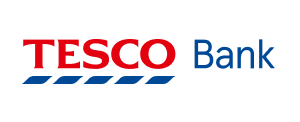Global Accessibility Awareness Day is once more upon us – a fantastic reminder of the importance of accessibility and inclusion.
More than one billion people worldwide have some type of accessibility issue that impacts their daily life. It’s important that businesses put accessibility at the forefront of their minds, not just because it’s the right thing to do, but also because it makes good business sense.
This is especially important when building a website: in today’s digitally driven society, many organisations almost exclusively interact with their customers online.
There are an estimated 4.3 million online shoppers with disabilities in the UK alone, with a combined spending power of £17.1 billion. These users are more likely to click away from websites if they face an accessibility issue and move to a competitor – and yet, 97% of websites are not offering a fully accessible experience.
Despite the obvious benefit that online accessibility is good for business, many organisations are still facing some stumbling blocks around the implementation. Developers and project managers are well aware it's simpler to include elements at the outset of a project rather than retrofitting them later - just like when building a house, you wouldn’t build and seal the walls before including the windows, would you?
Therefore, the key is to consider digital accessibility right from the beginning of product development rather than treating it as an afterthought. This approach will use fewer resources and provide the best possible results.
A businesses CMS should be able to draw your attention to any inaccessible elements of your website during the development stage. Some of the common mistakes content creators should look out for are:
• Links: Make sure any link on a website contains an aria-label, (a HTML attribute used to provide a label for an element on a webpage that is not descriptive enough for users of assistive technology, such as screen readers.)
• Colour contrast: Any imagery used must consider the colour of text that overlays it.
• Visual Focus Indicators: Ensuring a clear contrast ratio greatly helps aid in the visual clarity of a user’s position on a page.
• Text based images: Consider using HTML tables or ALT text for screen readers and other tools.
As well as optimising the use of a business’s CMS for identifying accessibility issues, businesses should remain up to date on inclusive practices and take guidance from professional bodies like The World Wide Web Consortium (W3C). W3C offer guidelines on how to make web content more accessible to people with additional needs, whether that be relying on screen readers and speech-input software, alternative text for images, or ensuring all functionality is operable through a keyboard interface.
Even people without disabilities can benefit from following accessibility guidelines – for example, making the experience predictable for those who are less tech-savvy (Guideline 3.2), or ensuring content can be displayed in different ways without losing information for those who rely on a mobile phone to access the internet or who live in rural areas and have less bandwidth (Guideline 1.3).
But it’s important to remember that digital accessibility encompasses more than just websites. It applies to all tools that use digital technology, including software, mobile applications, connected objects, and more. We use digital tools for everything from planning trips to shopping, monitoring our health, or even to simply relax.
While there is no legal requirement for private companies to ensure accessibility in the UK (aside from certain regulations for public bodies) beyond making “reasonable adjustments”, the business argument is clear: people will gravitate towards digital experiences that meet their needs.
The onus has always been on businesses to meet their customers’ wants and needs. But the addition of accessibility should be brought up on the list of priorities. Making this a key factor from the start, rather than developing your ideal product and then going back and shoehorning it in, will ensure an ideal and inclusive digital experience for everyone.



